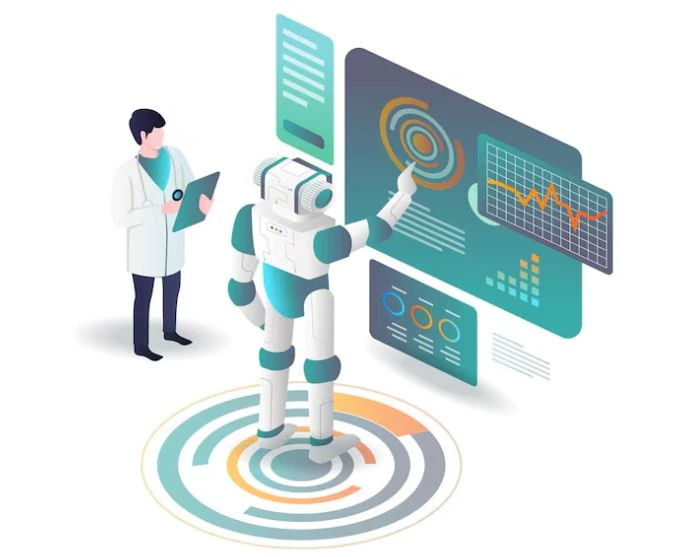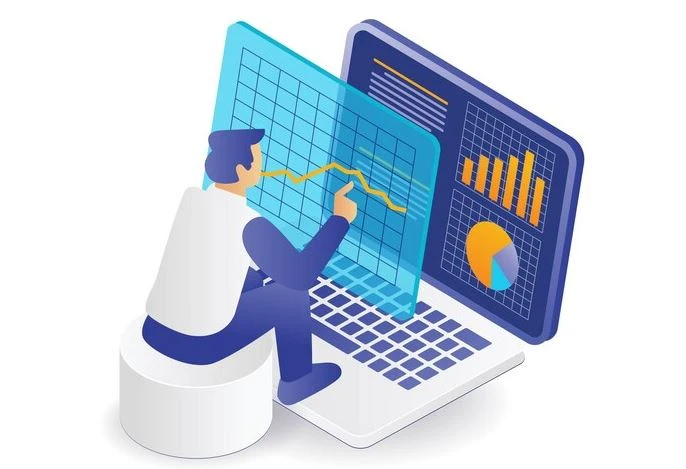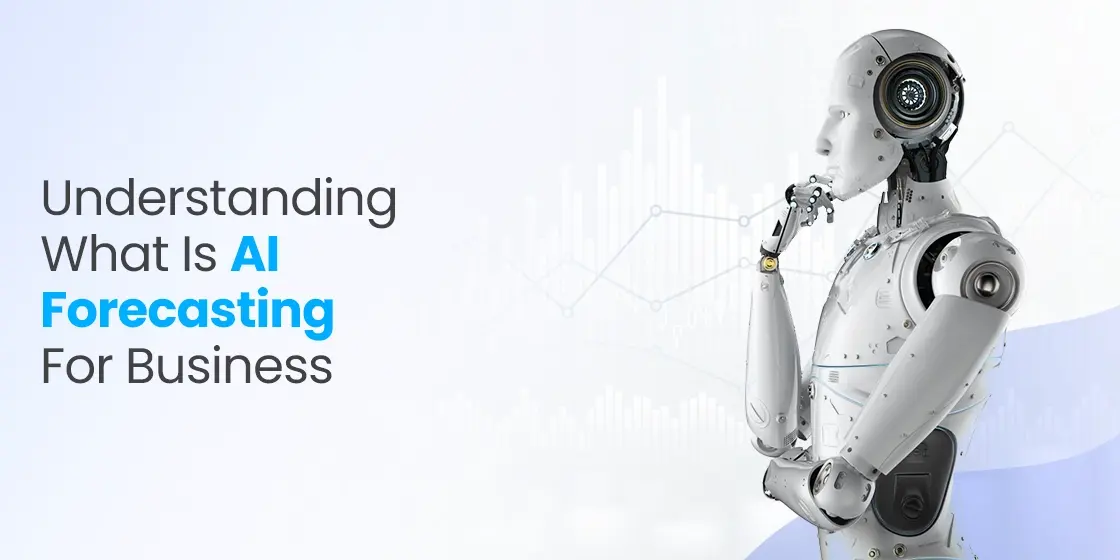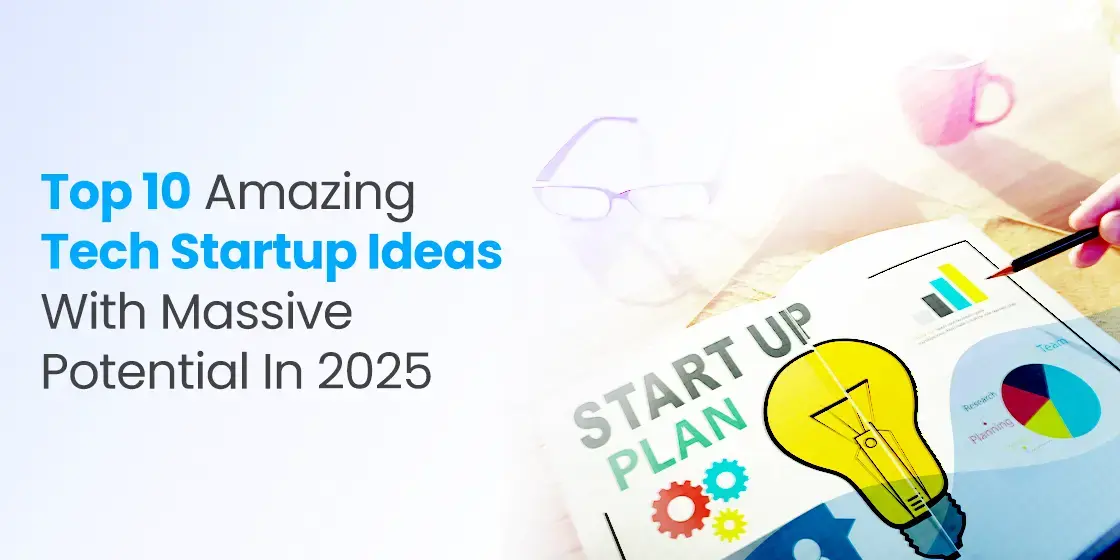Table of Content
Learn How to Use AI Forecasting for Businesses in an Organized Manner
Staying ahead in the market is a top priority of every business. It is something that can be done by executing targeted marketing campaigns before the promotions of competitors. To do that, they need a technology that can analyze data and predict possible outcome of specific marketing actions. Luckily, businesses can use the emerging AI technology to forecast results of particular campaigns. It refers to a specific method that is called AI forecasting for businesses. It is increasingly becoming known in the industry as more and more marketers are using it to predict outcomes of marketing campaigns and promotions.
Artificial intelligence has the capacity to read data and take actions as per the given requirements. It can also let the marketers know how their actions will fare in terms of generating positive or negative results. This information is very important, as it gives everyone a heads up whether the campaigns will work or not. By considering this prediction, it becomes easy for digital marketers to plan future actions smartly. The AI forecasting for businesses is therefore termed important, as it provides an early glimpse of the imminent results.
By analyzing the data timely, businesses can also know which type of software they will require to streamline operations. They can then take specialized software development services to build products as per the needed requirements. Like this, AI forecasting also offers others benefits that should be known to the business stakeholders. In this blog, we will discuss all of them, so that you can understand why AI forecasting for businesses should be used to move ahead in the market.
What is AI Forecasting for Businesses?

The success of any company depends largely on the actions it take after analyzing the data. A lot of times, this data analysis gets late due to varying reasons. The lack of resources and technology often looks to be the main culprit. Nowadays, finding a valuable information from a huge chunk of dataset is quite difficult. It cannot be done by using manual resources, as that could take a lot of time to process results. This rightly underscores the importance of timing, as companies with quick operations team always deliver quality results.
Artificial intelligence is a technology that helps businesses to overcome this challenge. It is capable to read, understand and analyze data as per the merit of the information given. Not just that, but AI can also let you know how the data will work if you’ll utilize it with a proper strategy. It can define the possible outcome of any marketing campaign that is executed by using a particular set of information. This process is called AI forecasting for businesses, as it refers to the results that could come on the bases of a specific data.
With the help of AI forecasting, businesses can know which actions should be pursued to get quality results. The information shared by AI systems are accurate most of the times. Marketers can rely on this forecasting to plan their actions, and organize campaigns as per the needed requirements. Whether its about predicting sales or increase in quarterly traffic, AI can help businesses in various areas where they want to excel by using the power of data.
Importance of AI Forecasting for Business Growth

Forecasting for business growth using AI is crucial for modern enterprises seeking to thrive in today’s dynamic and competitive markets. Firstly, AI-driven forecasting enables businesses to leverage vast amounts of data from various sources to generate accurate predictions about future trends and outcomes. Unlike traditional methods that rely heavily on historical data and manual analysis, AI can process large datasets, and identify patterns rapidly. This allows businesses to make informed decisions based on real-time information, optimizing resource allocation, inventory management, and strategic planning.
Secondly, AI-powered forecasting provides businesses with a competitive edge by enhancing their ability to adapt to changing market conditions and customer preferences. By analyzing consumer behavior, market trends, and competitor strategies, AI algorithms can identify emerging opportunities and potential risks, enabling businesses to proactively adjust their strategies and stay ahead of the curve. Whether it’s predicting shifts in demand, software migration, forecasting sales performance, or anticipating supply chain disruptions, AI-driven forecasting empowers businesses to make timely adjustments and capitalize on opportunities for growth while minimizing risks.
Furthermore, AI forecasting offers scalability and efficiency by automating repetitive tasks and streamlining decision-making processes. By eliminating manual errors and biases, AI algorithms can produce more accurate forecasts with greater speed and consistency. Additionally, AI-driven forecasting models can continuously learn and improve over time, adapting to evolving market dynamics and refining predictions. This iterative process of optimization enables businesses to achieve greater precision and reliability in their growth projections, fostering confidence among stakeholders and investors alike.
Key Methods of AI Forecasting

AI forecasting for businesses can be done by utilizing two key methods i.e. Clustering and Neural Network Analysis. Both of them are capable to decrypt complex data to find valuable hidden information. They help businesses to find the authenticity of the data, and how it could be used to plan campaigns with targeted objectives. If you do not know much about them, take a look at the detailed explanation given below.
Clustering
When embarking on a clustering analysis, several key considerations warrant attention. Initially, it’s imperative to discern the nature of the data at hand and determine which clustering algorithm best aligns with its characteristics. With an array of clustering algorithms available, ranging from k-means to hierarchical clustering, selecting the most suitable one hinges on factors such as data distribution, dimensionality, and desired outcomes. Therefore, a comprehensive evaluation of these factors is essential to ensure the efficacy of the chosen algorithm in uncovering meaningful patterns within the dataset.
Following the selection of an appropriate clustering algorithm, the next step entails data collection and preparation to facilitate the analysis process. This involves assembling a comprehensive dataset that encapsulates all pertinent variables and features relevant to the clustering objectives. Additionally, data preprocessing techniques may be employed to address issues such as missing values, and outliers, thereby enhancing the quality of the ensuing analysis. By meticulously curating the dataset, analysts can mitigate potential biases and confounding factors that could skew the results, thereby fostering more accurate and insightful clustering outcomes.
Moreover, beyond the technical intricacies of algorithm selection and data preparation, the success of a clustering analysis hinges on the formulation of clear objectives and hypotheses. Articulating specific goals and delineating the expected outcomes of the analysis not only guides the selection of appropriate algorithms and methodologies but also informs subsequent interpretation of the results. Furthermore, establishing a framework for evaluating the efficacy and validity of the clustering solution against predefined criteria ensures that the insights collected are actionable and aligned with organizational objectives.
Neural Network Analysis
Neural networks represent a sophisticated category within the realm of machine learning algorithms, adept at unraveling intricate patterns inherent in datasets. These networks are structured with numerous interconnected processing nodes, colloquially termed neurons, which possess the capability to assimilate and decipher complex patterns embedded within input data. This intricate architecture mirrors the interconnectedness of neurons in the human brain, allowing neural networks to discern and extrapolate underlying relationships among data points.
In the realm of forecasting, neural networks emerge as a potent tool for extrapolating future trends and dynamics from past data. Leveraging their innate ability to detect subtle patterns and nonlinear relationships within datasets, neural networks can discern intricate patterns and trends that may elude traditional forecasting methods. By assimilating historical data as input and employing sophisticated learning algorithms, neural networks can discern underlying patterns and correlations, enabling them to generate accurate predictions of future values.
Furthermore, the efficacy of neural networks in forecasting hinges on their capacity for continual learning and adaptation. Unlike static models that rely solely on historical data, neural networks possess the ability to adapt and refine their predictive capabilities over time. Through a process of iterative learning, neural networks can assimilate new data inputs and recalibrate their predictive models. This dynamic adaptability enables neural networks to remain agile and responsive, thereby empowering businesses with timely insights to drive proactive decision-making and gain a competitive edge.
How to Use AI Forecasting for Business?

Using AI forecasting for business is not that difficult, provided you are using the right dataset. A lot of times, marketers use incorrect datasets without knowing their impact on the overall results. It is therefore advised to select datasets wisely, so that you can get accurate results as per the deep analysis of artificial intelligence.
List Down Goals
Prior to embarking on the utilization of AI for forecasting purposes, it is imperative to meticulously delineate the specific objectives one aims to accomplish. This entails a thorough examination of the decisions awaiting resolution that stand to derive substantial benefits from heightened forecast accuracy. Whether it involves inventory management, financial planning, or resource allocation, identifying the pivotal junctures where precise predictions can lead to advantageous outcomes serves as a cornerstone in the strategic implementation of AI-driven forecasting solutions.
Once the overarching objectives have been discerned, the subsequent step entails a comprehensive exploration of the manifold avenues through which AI technologies can be leveraged to attain these goals. This process involves scrutinizing the diverse array of algorithms, models, and data sources available to tailor an approach best suited to the functional requirements and constraints of the given scenario. By delving into the capabilities of AI in predictive analytics, businesses can uncover opportunities to enhance decision-making processes, optimize resource utilization and mitigate risks effectively.
Gather Insightful Data
A cornerstone of effective AI forecasting lies in meticulous data collection. It is imperative to curate high-quality datasets, as the accuracy of algorithmic predictions hinges upon the quality and quantity of input data. Ensuring an ample supply of historical data points empowers AI systems to discern intricate patterns and trends, thereby enhancing the precision of forecasts. Moreover, augmenting internal datasets with relevant external sources, such as meteorological data or economic indicators, can provide valuable context and enrich the predictive capabilities of the algorithms.
Furthermore, the process of data collection extends beyond mere aggregation to encompass rigorous validation and preprocessing stages. Conducting thorough data validation checks helps to identify and rectify inconsistencies or anomalies within the datasets, ensuring the integrity and reliability of the input data. Additionally, preprocessing steps such as normalization and feature engineering play a pivotal role in optimizing the data for consumption by AI algorithms, enhancing their ability to discern meaningful insights and facilitate more accurate forecasting outcomes.
Select Custom AI Tool
The method of forecasting encompasses a diverse array of algorithms. Therefore, selecting the most appropriate algorithm demands an understanding of both the nature of the data and the desired forecasting objectives. Delving into the intricacies of various algorithms enables decision-makers to discern their suitability in relation to the specific characteristics of the dataset under consideration. Engaging with domain experts can provide invaluable insights into algorithm selection, helping to navigate the myriad options available and identify the optimal choice aligned with the organization’s objectives.
Moreover, the process of algorithm selection often involves iterative experimentation and evaluation to ascertain the efficacy of different approaches in generating accurate forecasts. By conducting comparative analyses across multiple algorithms, organizations can gain empirical insights into their respective performance metrics and identify the algorithm that best aligns with their forecasting needs. Leveraging techniques such as cross-validation and benchmarking facilitates a systematic evaluation of algorithmic performance under diverse scenarios, enabling informed decision-making regarding algorithm selection.
Use Data Centric Methodology
Fostering transparency and collaboration regarding data within the organization are paramount. It’s essential to ensure that all team members have access to the requisite data for their respective roles and responsibilities. Moreover, creating an environment where individuals are encouraged to share insights can significantly enhance the organization’s capacity for leveraging data-driven decision. Cultivating a culture that values data not only empowers employees to experiment with various data applications but also stimulates a culture of continuous learning and innovation.
A data-driven culture thrives on encouraging exploration and experimentation with data. Providing employees with the autonomy to explore different methodologies fosters innovation within the organization. By embracing a culture of curiosity, companies can uncover novel insights and unlock untapped potential within their datasets. Furthermore, facilitating knowledge-sharing forums and providing opportunities for cross-functional collaboration can amplify the collective intelligence of the organization, enabling the discovery of innovative data-driven solutions that drive business growth.
Advantages of AI Forecasting for Businesses

By utilizing AI forecasting for business growth, you can get plenty of advantages. It is a technology that gives businesses an ability to predict future results based on the available data. If you do not know much about AI use cases for business forecasting, take a look at the points defined below.
Prediction Accuracy
Artificial Intelligence revolutionizes forecasting by leveraging high-quality data to generate precise and efficient predictions. Its influence spans the entirety of the forecasting cycle, from meticulously selecting driver data to optimizing the amalgamation of consensus forecasts. With its robust capabilities, AI and Machine Learning excel in processing vast and intricate datasets.
Better Decision Making
Utilizing artificial intelligence tools enables the optimization of decision-making processes guided by forecasts, such as refining production schedules. This capability significantly enhances the capacity to make informed business decisions promptly, facilitating early detection of fluctuations and enabling the timely implementation of appropriate strategies.
Improved Resource Planning
Cutting-edge AI and ML technologies are transforming the landscape of prediction-making and strategic decision-making within businesses. By comprehending the mechanics of AI within the framework of business planning, organizations can unlock their potential to secure a competitive advantage in the marketplace.
Frequently Asked Questions
| What is AI forecasting for businesses? AI forecasting for businesses is the use of artificial intelligence algorithms to analyze data and predict future trends or outcomes, aiding in strategic decision-making and planning. |
| What is the advantage of using AI forecasting for business growth? The advantage of using AI forecasting for business growth lies in its ability to provide accurate predictions based on data analysis, enabling informed decision-making for all types of businesses. |
| How AI forecasting can help in supply chain management? AI forecasting optimizes supply chain management by leveraging advanced algorithms to predict demand and enhance operational efficiency, thereby minimizing costs and maximizing responsiveness. |
Final Words
That brings us to the end of this blog in which we have discussed how businesses can use AI forecasting to plan different types of operations and marketing activities. It is a great technology that allows businesses to analyze how a particular set of data will perform. By leveraging the power of AI forecasting, marketers can make accurate decisions and cut down several mistakes that can hamper the growth of whole company. It is therefore important to understand the specifics of AI forecasting, as it can help companies to make better smart decisions every time.
Empower your digital initiatives with BariTechSol, a premier custom software development company. Our skilled team tailors cutting-edge solutions to your unique needs. Elevate your tech experience and stay ahead in the digital realm. Partner with BaritechSol and code the success of your next big idea.


